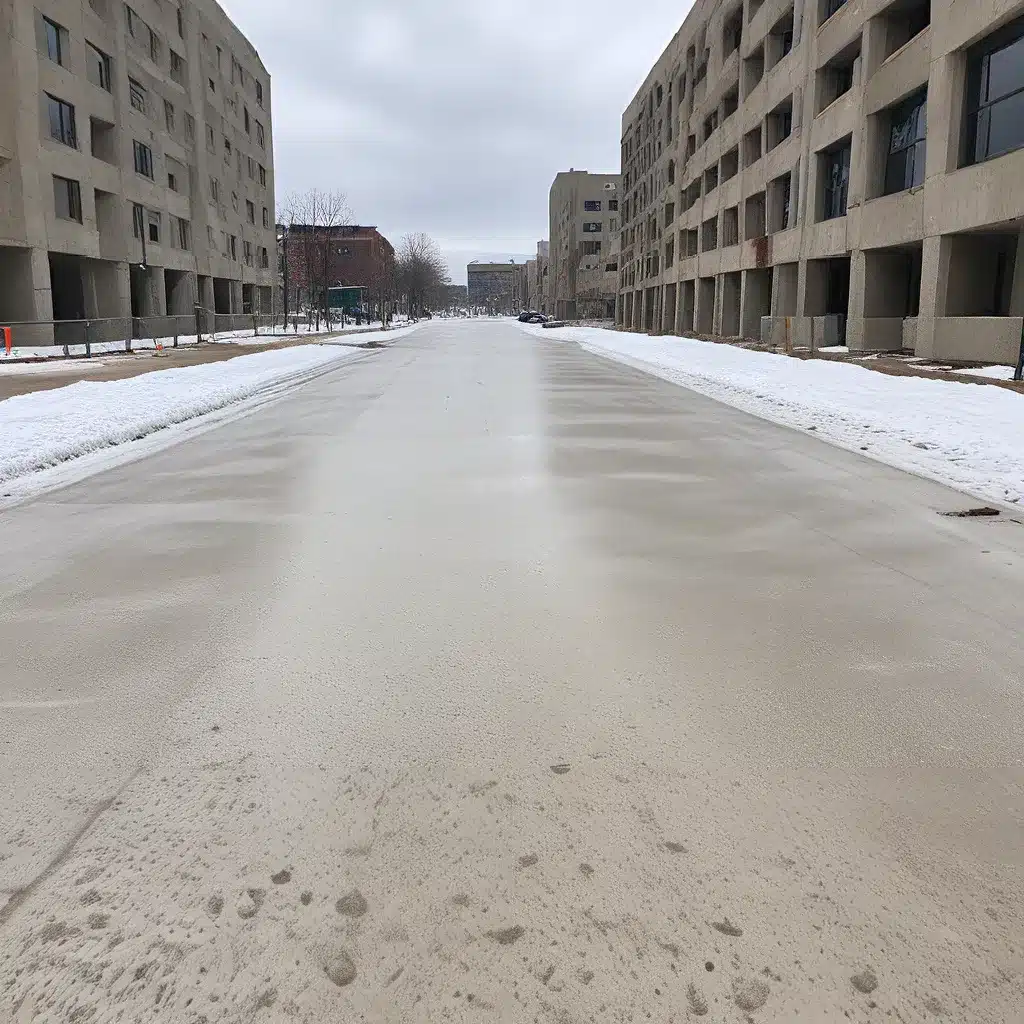
Protecting Concrete in Cold Weather: Strategies for Success
As the temperature drops in Kansas City, the challenges of working with concrete during the winter months come to the forefront. Concrete construction doesn’t stop when the mercury falls, but the cold weather can introduce a host of complications to the curing process. Understanding these challenges and utilizing best practices can ensure the longevity and strength of your concrete work, even in the chilliest conditions.
Combating the Cold: Common Concerns and Solutions
One of the primary concerns when working with concrete in cold weather is the risk of freezing. Freezing can significantly reduce the concrete’s final strength, making it weak and brittle. This happens because the water in the concrete mix expands as it freezes, causing damage to the concrete’s internal structure. To combat this issue, it’s crucial to maintain appropriate initial temperature and moisture levels to ensure standard set times and strength, even in cold weather.
According to industry experts, cold-weather concreting occurs when the air temperature falls below 40°F (4.4°C) for three days and below 50°F (10°C) for more than one-half of any 24-hour period during the protection period. This protection period is the time required to prevent cold weather from adversely affecting the concrete. Failure to properly protect the concrete during this critical time can result in a loss of up to 50% of its final strength.
Preparing for the Chill: Essential Steps for Cold-Weather Concreting
To ensure a successful concrete pour in cold weather, contractors should follow these essential steps:
-
Select High-Quality Concrete: Choose a concrete mix with a minimum compressive strength of 4,000 psi (27 MPa) or higher. Air-entrained concrete is also recommended, as it allows water to enter the tiny air voids, relieving pressure from concrete capillary pores when the water freezes and expands.
-
Warm and Prepare the Site: Before pouring, warm and prepare the ground and water to prevent shocking the concrete. This may involve pre-heating the water and aggregates to 140°F (60°C) and 180°F (82°C), respectively, and removing any ice, snow, or standing water from the pour area.
-
Maintain Concrete Temperature: Monitor the concrete temperature carefully to ensure it stays above the required 50°F (10°C) for the concrete to continue gaining strength and does not drop below 40°F (4.4°C) in the first 24 hours. Use heat enclosures, blankets, and supplemental heating as needed to maintain the proper temperature.
-
Accelerate Curing: Adding accelerants to the concrete mix can increase the hydration rate, shorten the setting time, and speed up the curing process, helping the concrete reach the critical 500 psi (3.5 MPa) compressive strength threshold faster, reducing the risk of damage from cold weather.
-
Enhance Concrete Strength: Increasing the cement content by about 100 pounds per cubic yard can provide extra heat, quicken hydration, and minimize water-related issues like bleeding, further boosting the concrete’s weather-resistant qualities and strength.
-
Prioritize Worker Safety: Ensure the safety of employees working in cold conditions by educating them on the signs of cold stress and frostbite, and providing appropriate personal protective equipment (PPE) and heating sources as needed.
Insulated Concrete Forms: A Winter-Friendly Solution
One innovative solution that can significantly simplify cold-weather concreting is the use of insulated concrete forms (ICFs). These insulated forms, such as those offered by Concrete Contractor Kansas City, provide superior insulating qualities that allow for concrete pouring in temperatures as low as -5°F (-15°C) without the need for additional hoarding or heating.
The continuous insulation of ICFs retains the heat generated by the hydration of the concrete, keeping the core of the wall warm and enhancing the overall concrete strength. This can significantly extend the construction season, allowing for year-round concrete pours and reducing weather-related delays.
Moreover, the insulating properties of ICFs create highly energy-efficient building envelopes, reducing the need for mechanical heating and cooling and providing a comfortable indoor environment throughout the winter months.
Maximizing Durability and Longevity
In addition to the challenges posed by cold weather, concrete spalling and dusting are common issues that can compromise the long-term performance and appearance of concrete surfaces. Spalling, the breaking, chipping, or flaking of the concrete, can be a significant concern in many construction and structural applications.
To address these problems, it’s essential to utilize high-quality concrete finishing aids, curing compounds, surface hardeners, and sealers that can improve the concrete’s durability, workability, and overall appearance. By investing in the right products and following best practices, you can ensure that your concrete surfaces remain strong, durable, and free from unsightly defects, even in the harshest Kansas City winters.
Conclusion: Embracing Cold-Weather Concreting
While the challenges of working with concrete in cold weather can be daunting, with the right preparation, products, and techniques, you can ensure the successful completion of your concrete projects, even in the depths of a Kansas City winter. By understanding the key concerns, implementing proven strategies, and leveraging innovative solutions like insulated concrete forms, you can deliver frost-resistant, high-quality concrete that will stand the test of time.
Remember, Concrete Contractor Kansas City is always here to support you with expert guidance, industry-leading products, and valuable resources to help you navigate the unique demands of cold-weather concreting. Together, we can ensure your concrete work remains of the highest caliber, no matter the thermometer’s reading.

